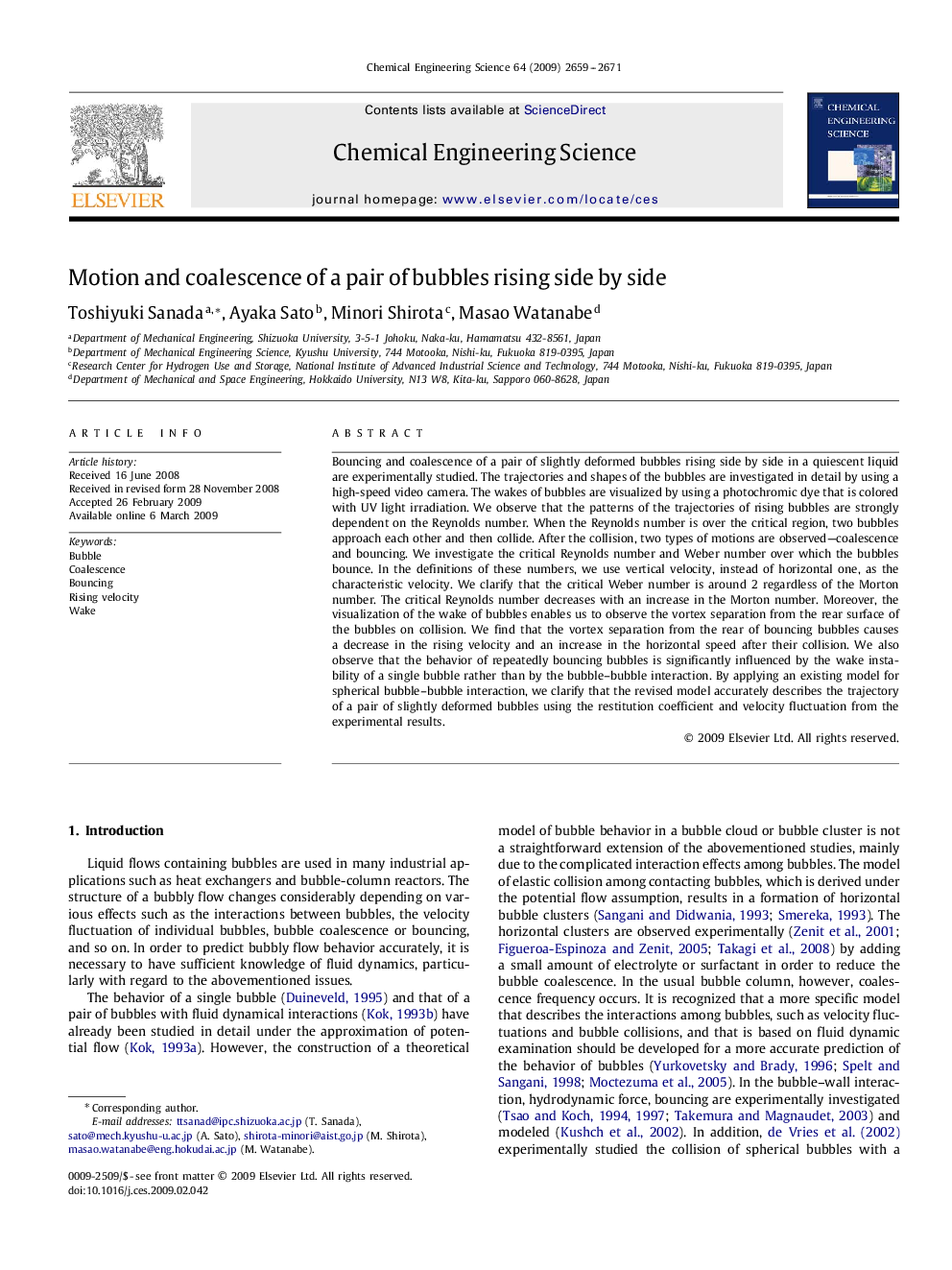| Article ID | Journal | Published Year | Pages | File Type |
|---|---|---|---|---|
| 157936 | Chemical Engineering Science | 2009 | 13 Pages |
Bouncing and coalescence of a pair of slightly deformed bubbles rising side by side in a quiescent liquid are experimentally studied. The trajectories and shapes of the bubbles are investigated in detail by using a high-speed video camera. The wakes of bubbles are visualized by using a photochromic dye that is colored with UV light irradiation. We observe that the patterns of the trajectories of rising bubbles are strongly dependent on the Reynolds number. When the Reynolds number is over the critical region, two bubbles approach each other and then collide. After the collision, two types of motions are observed—coalescence and bouncing. We investigate the critical Reynolds number and Weber number over which the bubbles bounce. In the definitions of these numbers, we use vertical velocity, instead of horizontal one, as the characteristic velocity. We clarify that the critical Weber number is around 2 regardless of the Morton number. The critical Reynolds number decreases with an increase in the Morton number. Moreover, the visualization of the wake of bubbles enables us to observe the vortex separation from the rear surface of the bubbles on collision. We find that the vortex separation from the rear of bouncing bubbles causes a decrease in the rising velocity and an increase in the horizontal speed after their collision. We also observe that the behavior of repeatedly bouncing bubbles is significantly influenced by the wake instability of a single bubble rather than by the bubble–bubble interaction. By applying an existing model for spherical bubble–bubble interaction, we clarify that the revised model accurately describes the trajectory of a pair of slightly deformed bubbles using the restitution coefficient and velocity fluctuation from the experimental results.
